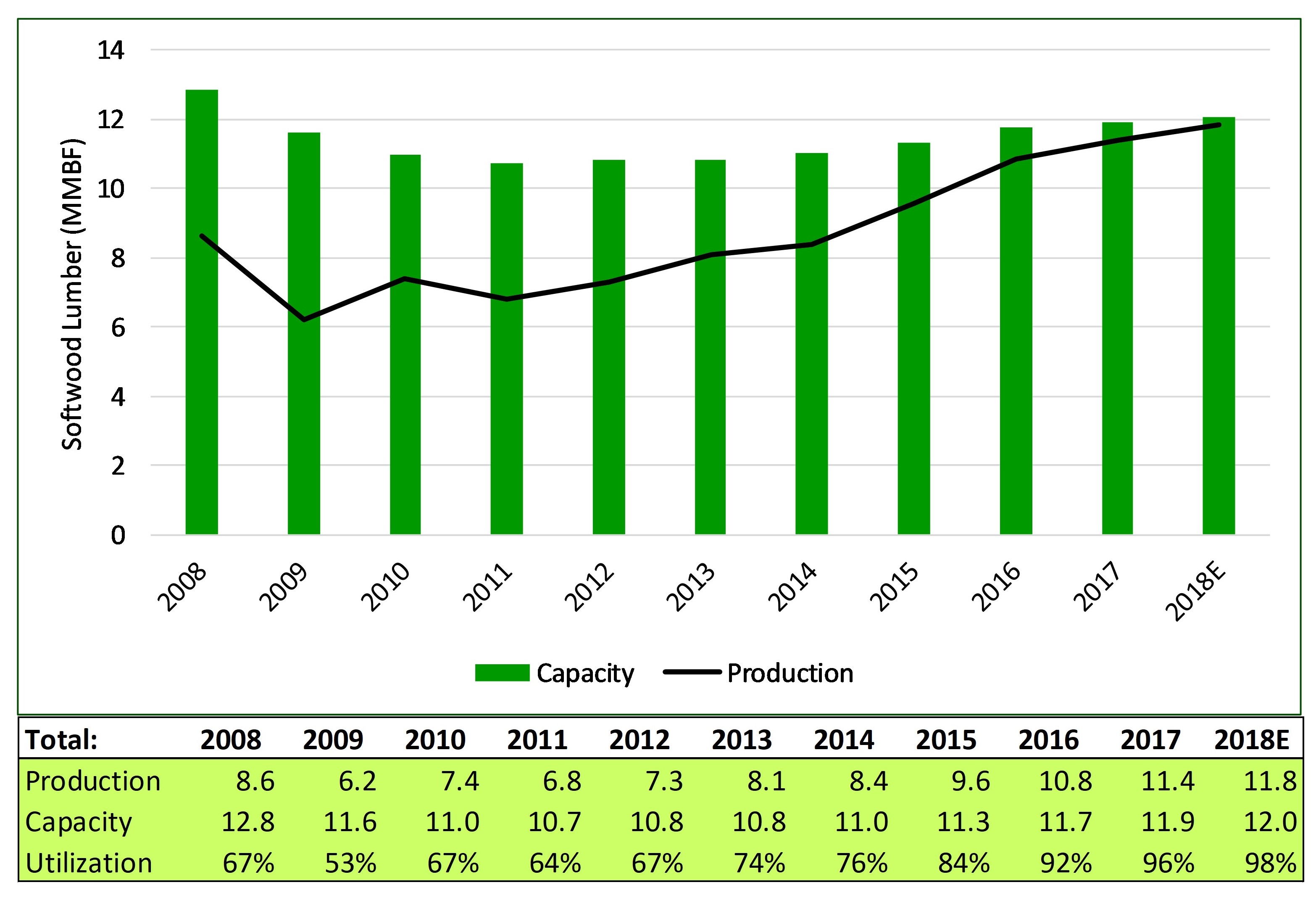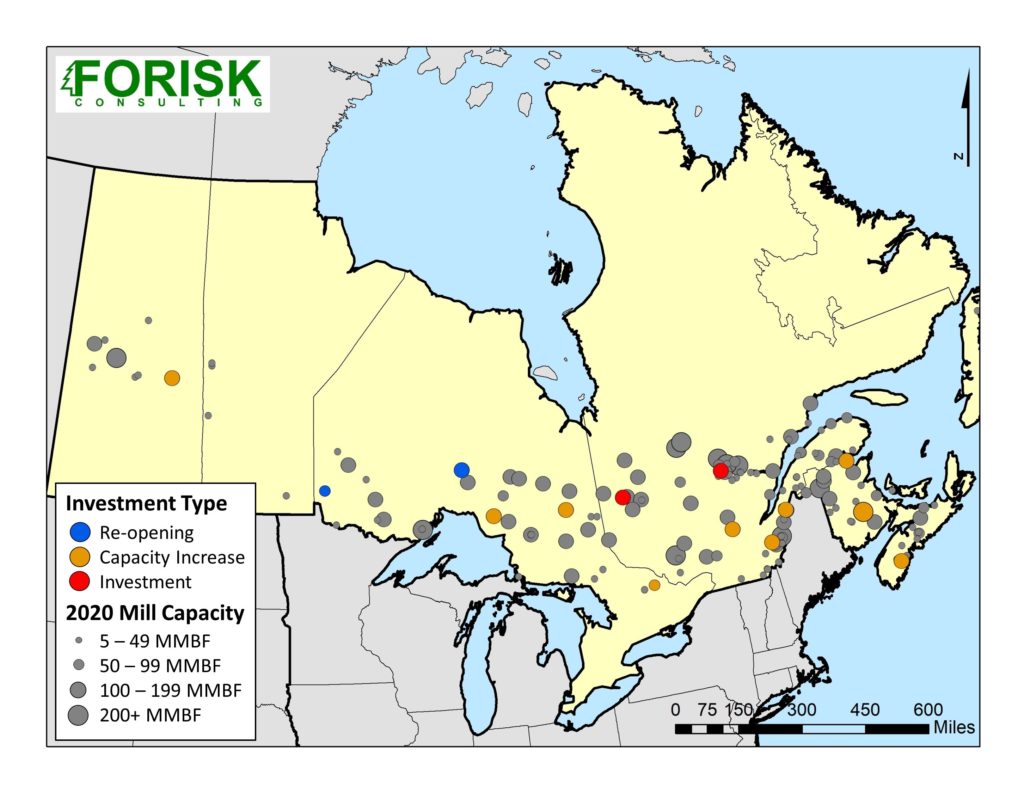Over the past decade, Eastern Canada has consistently been the fourth-largest installed base of regional softwood lumber manufacturing capacity in North America, behind the U.S. South, the U.S. West, and Western Canada. However, the region has gained importance as a source of incremental production and capital investment, offsetting lost production in the wake of the mountain pine beetle infestation and devastating fires suffered in Western Canada. Eastern Canada currently accounts for 12.0 billion board feet (BBFT) of softwood lumber capacity (17% of North America’s total capacity), a modest reduction from a decade ago. However, production is on track to reach 11.8 BBFT this year – the seventh consecutive year of production gains (Figure 1). With a utilization rate of 98%, Eastern Canada lumber producers are making the most of their assets.

The narrowing rift between capacity and production is driving investment. Figure 2 maps announced, active and completed capital investment projects in Eastern Canada over a five-year period, beginning in 2016 and including projects with expected completion by 2020. Overall, these projects are modest in size, totaling less than 700 MMBF in softwood lumber capacity. Still, these investments, along with the highest utilization rates in North America since 2016, highlight the important role played by the region in North American production. The most remarkable take-home from the map is the broad and diversified effort to upgrade, improve or expand capacity at existing mills to, in part, offset lost production in Western Canada and serve the U.S. export market.

Data for this post comes from Forisk’s comprehensive analysis of North American wood-using capacity for 2008-2020 by firm and sector across five North American regions. For more information, click here.

Leave a Reply